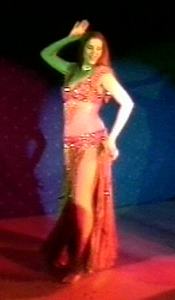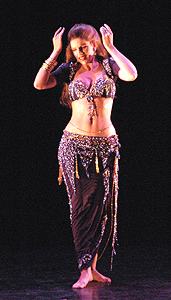How to Analyze Dance Styles by Meissoun For a long time, the term “style” was something that I didn’t really understand. I watched performances or videos of Oriental dancers and was able to tell if I liked them or not – but if they danced Egyptian, Turkish, Lebanese, American, old, new, Sharqi or Baladi style was something I couldn’t really discern. It took me some years before I was able to identify stylistic details and typical movements. I have discovered that one needs some experience, good education and a trained eye to do so. At a certain point I began to recognize “style” and identify it systematically. I was surprised to notice that suddenly I could also appreciate dancers that I had thrown into the “don’t like” basket before. So I started to really work on figuring out the styles of certain dancers. As a result I have also broadened my personal repertoire; nowadays I also teach workshops about the styles of famous dancers like Nagwa, Suheir, Amani or Dina. I would like to explain now how I conduct my style analysis, and give some typical elements for various regions and dancers. Ways of analyzing If you are analyzing a dancer from the Middle East, you will often have to put up with nerve wrecking camera angles – and many times there is a close-up of the face when you want to see the hips or there’s a view of the audience during the most interesting accents… On the other hand, one suddenly learns to appreciate that some dancers have very open skirts because it’s much easier to see what they are doing with their legs! While analyzing dancers this closely, one also discovers their weaknesses. Many of them are one-sided: They always turn to the right, do a hip circle only to the left, use only one hip for drops etc. It’s important not to copy a famous dancer’s little ticks and mannerisms. For example if a dancer often throws her hair out of her face, the same head movement can look stupid on you if you have short hair. What to watch
The hips are the body part that attracts our eye the most.
Upper body
Use of space For this you have to take into account where the dancer is performing. Is it a nightclub with an audience on 3 sides or a TV or stage show with audience or cameras on one side only?
Head
Music interpretation
Other things
The more I have studied Egyptian dancers, the more difficult I find it to define “the” Egyptian style; some of them dance very differently. For example Nagwa Fuad, Suheir Zaki and Dina are three totally different personalities and it reflects in their dance styles. But there are things that they have in common, like dancing in the same place over a longer period of time. Even Nagwa has sequences in her fully choreographed, stage filling shows where she hardly moves around. In general, Egyptian dancer are much less into hitting every accent in the music as Western dancers are. The first thing one notices when watching Lebanese dancers are the high heels they all wear. Of course they also influence the dance style. Hip movements are more upwards and drops look more like twists. Most of the videos that are available show the dancers in TV studios and on large stages where they have to fill the space, leading them to move around a lot and make their movements bigger. They also spin often and for long periods of time. Turkish dancers also dance in heels, and often very fast. Unfortunately there aren’t very many good videos so I can’t say much more. One Turkish dancer who is exceptional is Asena. She has her own elegant style and a slightly cool, distanced attitude. Copying
style Watching and analyzing various dancers can be a very good way of learning, especially for advanced level dancers. Have a comment? Send us a letter!Check the "Letters to the Editor" for other possible viewpoints! Ready
for more? 9-14-05
Behind
The Nile Group Workshops in Cairo
by Zeina 9-13-05
What is a Ghazal? by Leigh 9-9-05
Rhythm and Reason Series, Article
4, For Whom Do You Dance? by Mary Ellen Donald
9-8-05 Belly Dance, Burlesque and
Beyond: Confessions of a Post Modern Showgirl by Princess
Farhana (Pleasant Gehman)
9-6-05 Making New Musical
Inroads in Spain by Mark and Ling Shien Bell 9-5-05
Sirat Al-Ghawazi, Part
7 by Edwina Nearing |









